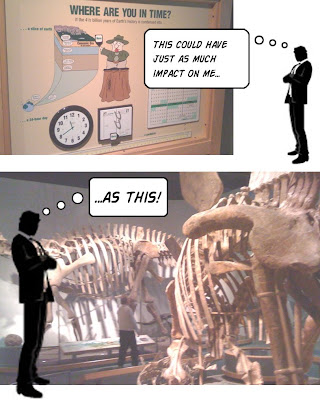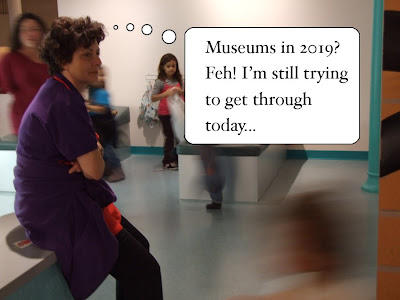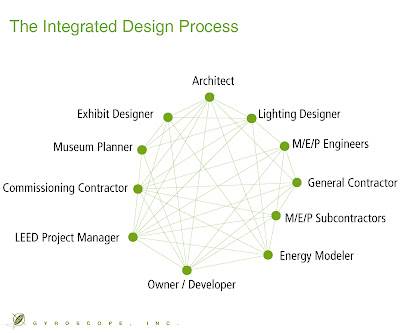By Maria Mortati
I went to a few web-related sessions at
ASTC that brought up some interesting questions and case studies.
Bryan Kennedy of the blog
Science Buzz talked about the Body World Exhibit blog at
Science Museum of Minnesota (SMM). They used the opportunity of the show to look at issues around body donation and asked questions of ethics (and beyond) via the
blog. In using this example where they opened it up to be "messy", Bryan was trying to get the audience to consider what their comfort level is with things like controversy when setting up a 2.0 outreach tool.
Kevin Von Appen of
RedShiftNow posed the question of "How do you make the virtual audience physical?" He gave a case study of a world wide YouTube event and subsequent real world
"888torontomeetup" they held at
Ontario Science Center, and how popular it was. While they didn't end up covering a lot of science, it brought in a new audience to their museum, and created a memorable (and heavily archived) connection.
Nina Simon of
Museum2.0 gave a really fun example about how to do "tagging" in the real world. It's about a book drop in the Netherlands where folks returned books into one of two slots: average books and great books. She wrote a
fantastic blog post about designing from a virtual metaphor to a real world experience.
Other topics covered, such as:
- On a museum website or blog, should you make the "official" voice visible? (yes, usually)
- In terms of child safety and museum sites, they suggested that you don't ask "problem questions" of kids during the log in to avoid issues such as COPPA conflicts later.
- On extending the visit: the Franklin Institute (I think) has a face aging interactive on the museum floor that posts the picture on the web site. 75% of visitors log in from home to retrieve it. What a great opportunity for them to ask provocative questions about their thoughts on aging, plastic surgery, you name it. You could enrich AND extend the museum experience.
In the session Making Exhibitions Memorable that I cartooned about yesterday,
Renato Valdes Olmos discussed how exhibits have permanence, but little reach outside the museum walls. He reinforced the importance of following those who are blogging or
flickring about your exhibits, because again, that extends their reach, and leaves a record. He brought up the artist
Banksy, who made a fictitious
pet store exhibit and how word spread in a viral fashion via
Twitter- which got people to go find it. That approach might not play out so easily for a science museum with a permanent collection-- the Banksy piece is a temporary art exhibit.
The thing I keep hearing is this: provide multiple vehicles for visitors to comment and spread the word about their experiences at your museum. Listen to what they are saying, and respond. The interaction itself will provide great fodder for expanding your relationship with your visitors, and in turn, your impact on their lives.
For me, this boils down to being open, hospitable, and responsive-- and utilizing web 2.0 to do it.











































